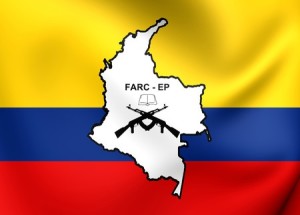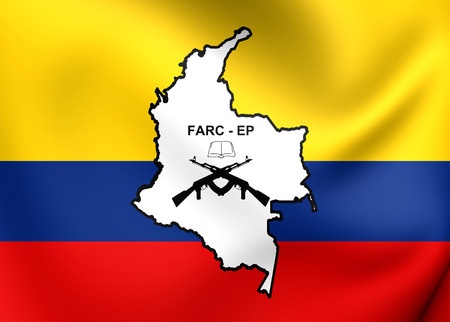
When I began my first counseling job in the 1980s working at an out patient drug and alcohol center, I didn’t realize I would eventually be on the front line in the war against terrorism. I’ve never been in the military or the CIA. I’ve consistently worked in some capacity with people struggling with drug and alcohol-related problems. But the drug trade and terrorism have merged in a way that is truly disturbing. In effect, the drug trade has become both a weapon and a funding source for terrorists.
The term “narco-terrorism” has a surprisingly long history. It was coined back in 1983 by Peru’s then president Belaunde Terry to describe attacks by cocaine traffickers aligned with the Maoist rebel group the Shining Path against Peruvian police. These days it has a much broader application. Hamas, the Taliban, and even ISIS/ISIL have been implicated in either direct activity with the drug trade or in working with drug cartels by using their distribution routes to move people and weapons.
Alex Perry, writing for Newsweek, described several incidents in West Africa that involved cocaine being smuggled into Europe. In November of 2009 a Boeing 727 landed in eastern Mali with 10 tons of cocaine. After the cocaine was unloaded, the plane was torched. There’s a photo of the burned plane in his article. He described an apparent cocaine smuggling operation that has a connection with the Guinea-Bissau military. A colonel in the Malian secret service was quoted as saying there were convoys every Friday. Half the vehicles carried drugs and half provided security. “Assuming a light load of half a ton per truck, and a minimal schedule of one convoy a month, that’s still 48 tons of cocaine a year – worth around $1.8 billion in Europe.”
Perry commented that the story of cocaine helps to explain how Islamist groups in the Middle East and Africa earn billions of dollars each year. It also described how Europe’s appetite for cocaine disrupted the lives of hundreds of millions of others living in West Africa. He quoted a Western diplomat as saying: “This is about financing terrorism on Europe’s southern border, about drug money from Guinea-Bissau and Mali being used for a bomb in London.”
West Africa was rotten with drugs, its governments corrupt, unstable and unpopular, and much of this shaky edifice was supported by Western aid – a perfect environment for a purifying Islamist revolution. Mali was all the proof anyone needed that Africa’s nationalist leaders and their Western humanitarian backers were false prophets. The democracy held up by foreigners as an example to others was hollow, a narco state with a criminal kingpin in charge. And al-Qaida just happened to have a branch in northern Mali.
FARC, the Revolutionary Armed forces of Columbia, has been involved in the cocaine trade for decades. A paper by John Otis of the Wilson Center described how FARC grew from a rural-based rebel movement to one of the major players in the Columbian cocaine trade. “Massive drug profits help the FARC to buy weapons, uniforms, and supplies and to recruit fresh troops.” U.S. aid to Columbia has contributed to success against FARC, but at least one official with Columbia’s national police estimated FARC still earns about $1 billion from the cocaine trade. Others dispute this figure as too high, yet still acknowledge that FARC is “one of the most powerful drug trafficking syndicates in Columbia, and perhaps the world.”
In 2013, The Mirror reported that FARC sold a large quantity of cocaine to al Qaeda of the Islamic Maghreb (AQMI) in North Africa. They were paid in cash and weapons looted in Libya. This branch of al Qaeda has a long history of involvement with cocaine traffickers, particularly in the protection racket described above that enabled drug runners to safely cross the Algerian Sahara. A recent sting operation led to the arrest of the former head of the navy in Guinea-Bissau. Believing he was talking with members, of FARC, he agreed to supply ground-to-air missiles, AK-47 rifles and grenade launchers for four tons of cocaine with a street value of £168 million ($260.2 million).
The Daily Star said in December of 2014 that the DEA has been recording meetings between AQMI and FARC to agree on prices and negotiate fees since 2010. Certain parts of AQMI have pledged allegiance to ISIS, “forming an Islamic terror network spreading through the Middle East into Europe.” The African trafficking route typically starts in Guinea-Bissau, traveling north through the Sahara desert to Morocco, Algeria and Libya. Cocaine that reaches Morocco goes on to Spain. The Algerian shipments are split between Spain and France. The drug shipments passing through Libya go to the Cammora mafia in Naples and to Malta.
In January of 2015 a reporter for Vice News in Syria was shown some of the personal belongings taken from a ISIS leader who was shot and killed in a firefight. Along with a military-styled Dell laptop was a bag of cocaine. The Kurdish militia commander suggested the dead ISIS commander was distributing small amount to his fighters. If true, this presents the first concrete evidence of drug use among ISIS fighters.
There have been persistent rumors and accusations of drug use in the ranks of Islamic State fighters. Leaders in the group have been said to drug their militants to give them greater courage as they go into battle. This has led to both successful, but also reckless and ineffective suicide attacks by fighters who can easily be shot down. Certain IS militants have been described as “drug-crazed,” and Kurds report having found mysterious pills, capsules, and syringes on living and dead IS fighters. And the slurred speech of the murderer behind the infamous beheadings of kidnapped Westerners, the man dubbed “Jihadi John,” has been explained as him being high on khat.
Paul Shinkman reported for U.S. News in April of 2015 that FARC has developed disposable submarines, so-called “naro-submarines,” that can transport 8 tons of cargo more than 1,000 miles underwater. When the subs reach their destination, they are scuttled and sunk, making it almost impossible to identify and stop them. An admiral in the Columbian navy said: “These kind of artifacts can be used for whoever knows – weapons of mass destruction, illegal trafficking of migration, et cetera.” A report from a U.S. Army research office said the drug smugglers have invested millions of dollars to improve the quality of these submarines, even to the point of hiring Russian naval engineers. Top leaders in the U.S. military believe extremists groups like ISIS have plans to capitalize on these routes.
U.S. Coast Guard Vice Admiral Charles Michel has been warning about the threat posed by these submarines for several years. One of his concerns is whether FARC teams up with extremist group to transport money, drugs, weapons or even people. He said: “You can’t wait for this stuff to come to the United States. . . . Not only is that damaging our system, it gives away the tactical advantage that we have.”





